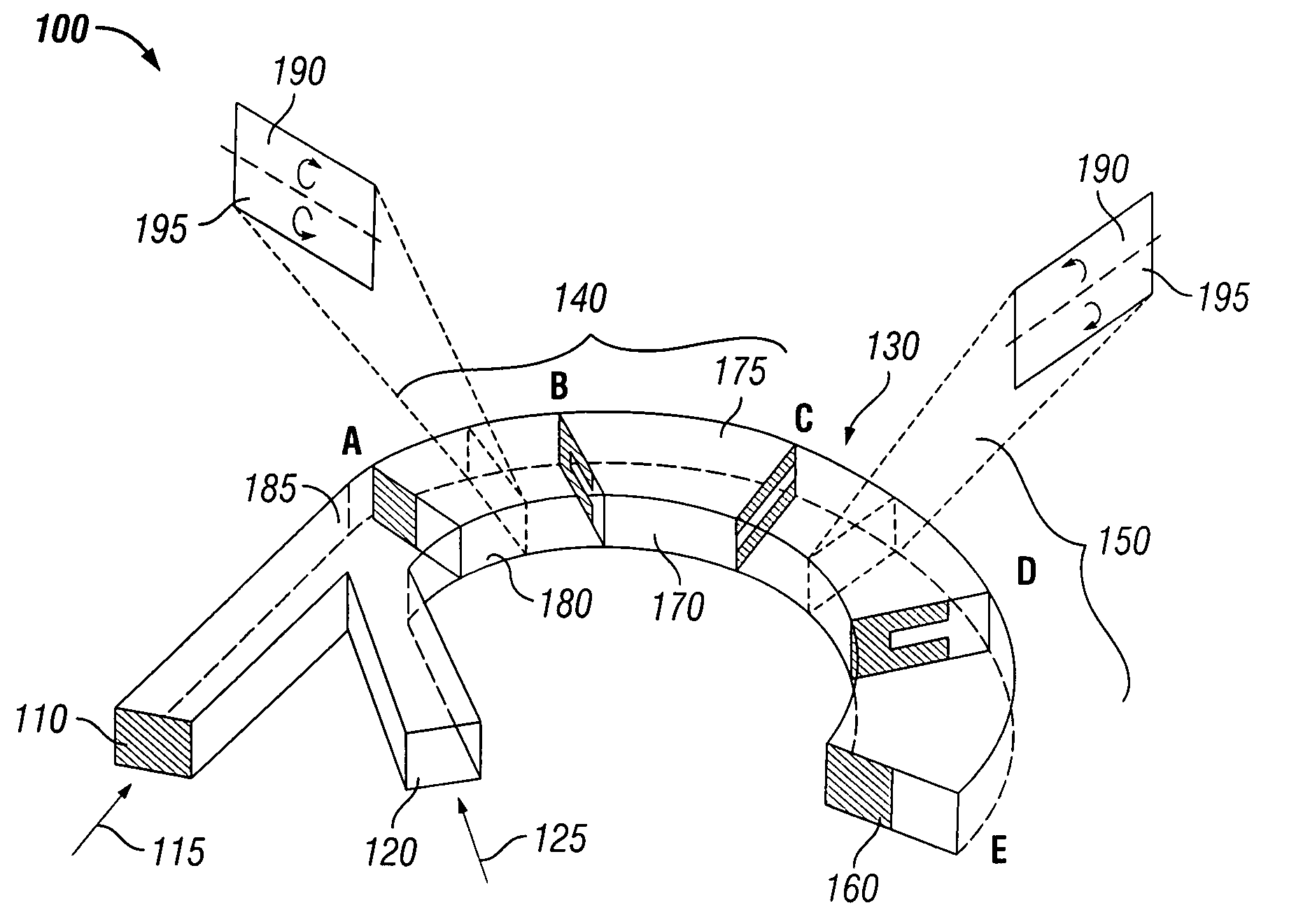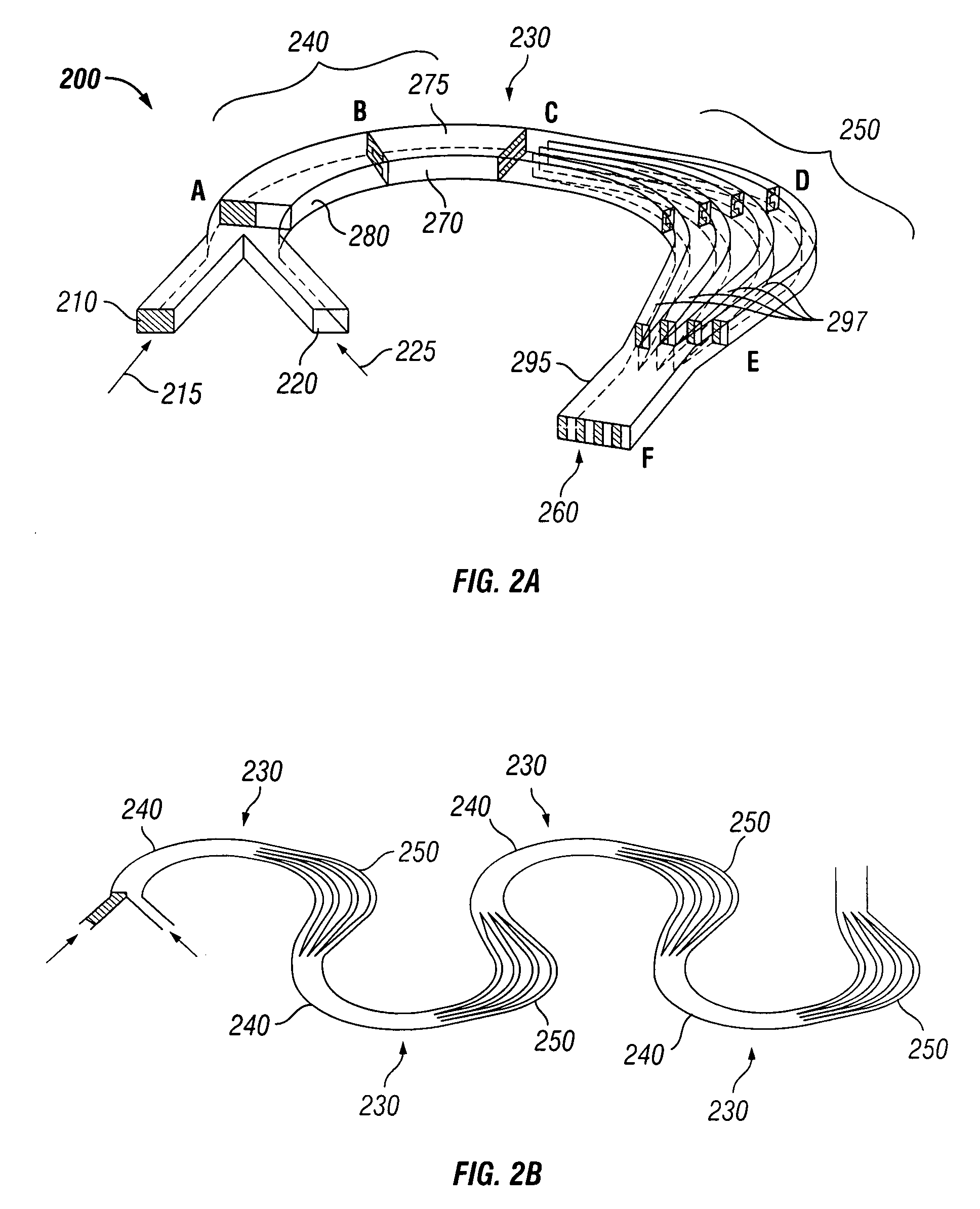Method for mixing fluids in microfluidic channels
a microfluidic channel and fluid mixing technology, applied in clay preparation apparatus, transportation and packaging, chemistry apparatus and processes, etc., can solve the problems of inconvenient use of mixing axes, cumbersome channels, and difficult microfluidic mixing
- Summary
- Abstract
- Description
- Claims
- Application Information
AI Technical Summary
Benefits of technology
Problems solved by technology
Method used
Image
Examples
Embodiment Construction
[0026]The present invention relates to the formation of microfluidic mixers and processes for mixing fluids therein. In one embodiment of a fluid mixer, the fluid mixer includes one or more fluid inlet ports, a curved channel connected to the one or more fluid inlet ports, with the curved channel having a first curved channel section and a second curved channel section disposed adjacent the first curved channel section, and an outlet port disposed adjacent the second curved channel section. Multiple curved channels may be connected in sequence with the preferred configuration having each subsequent curved channel having a curvature opposition of the prior channel.
[0027]FIG. 1 is a schematic perspective view of one embodiment of the fluid mixer 100 comprising a first inlet port 110 and a second inlet port 120 for providing a respective first fluid 115, shown as shaded, and a respective second fluid 125 to a channel 130 having two or more curved sections, such as a first curved channe...
PUM
| Property | Measurement | Unit |
|---|---|---|
| Reynolds number | aaaaa | aaaaa |
| Reynolds number | aaaaa | aaaaa |
| height | aaaaa | aaaaa |
Abstract
Description
Claims
Application Information
 Login to View More
Login to View More - R&D
- Intellectual Property
- Life Sciences
- Materials
- Tech Scout
- Unparalleled Data Quality
- Higher Quality Content
- 60% Fewer Hallucinations
Browse by: Latest US Patents, China's latest patents, Technical Efficacy Thesaurus, Application Domain, Technology Topic, Popular Technical Reports.
© 2025 PatSnap. All rights reserved.Legal|Privacy policy|Modern Slavery Act Transparency Statement|Sitemap|About US| Contact US: help@patsnap.com



